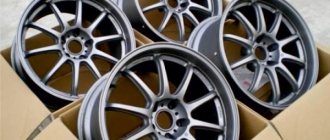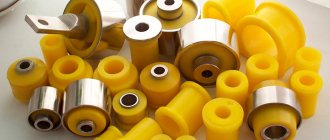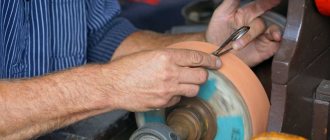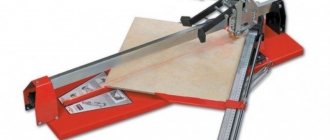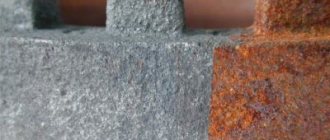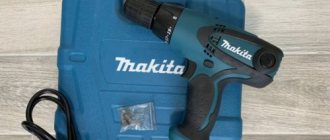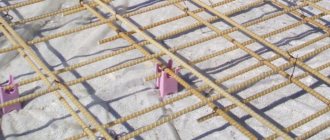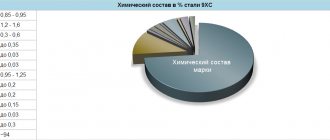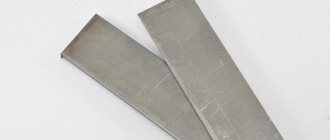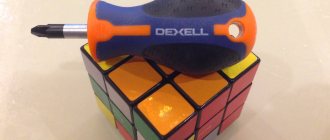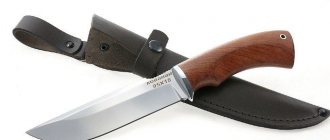24.07.2021
Alloy wheels are one of the basic accessories in terms of the design of any car, but at the same time they also affect its functionality, namely, its handling. This factor is ensured through the use of lightweight materials that contribute to good acceleration and braking of the vehicle. Over time, any cast disc becomes deformed. Most often this is caused by falling into potholes at high speeds or minor emergency situations. At this stage, the question usually arises: is it possible to repair a deformed cast disk?
The result of deformation is not only a violation of the visual component of the disc rim, but also a loss of the required geometry. Therefore, the problem is quite serious, as it affects safety. Stamped discs are much easier to repair, since a material such as steel can be easily repaired due to its properties. As a rule, to do this, it is enough to roll the rim on a special machine. But this method will not work for a cast disk. Only editing is allowed here. Let us consider in more detail the feasibility of the approach.
General information about disc rolling
Rolling cast wheels requires the intervention of only a qualified specialist who can complete the task without flaws. The final result of the work done will depend on the competence of the master. On the Internet you can often find negative reviews about straightening alloy wheels, but they are mainly associated with indecent actions of a specialist who not only failed to fulfill his duties, but also worsened the situation. Editing has several features:
- The first step is diagnosis, since each breakdown is individual. The worker is obliged to determine the nature of the malfunction, and to do this he removes the tires from the rims; otherwise it is impossible to find out the cause of the malfunction.
- The next step is to determine the nature of the flaw, on the basis of which a detailed plan for correcting the situation will be made.
- Alloy wheels often cause difficulties in repair work, therefore, straightening is an expensive procedure. In this, workers are helped by special equipment, which must be appropriate and of high quality. Alloy wheels require special care.
- Before starting the repair, repairmen clean the disks from dirt and dust, then the main stage begins.
Manufacturing of balancing machine
To extend the life of the wheels, they must be periodically balanced on an appropriate machine. You can also make this device for improving the quality of disks with your own hands.
And to do this you need to follow these steps:
- make racks. To do this you will need 2 steel strips 30*4 mm. At the top of the rack in a semicircle with a diameter of 32, you need to install a ball bearing;
- the base is made of a steel sheet with a thickness of 0.5 cm and dimensions of 30 * 50 cm. The sheet is attached to a pair of 3 * 4 cm wooden beams. The entire knot is secured with two pieces of 3*3 cm, 13.5 cm long;
- the second rack is done in the same way. The distance between a pair of posts should be 15 cm. And their verticality can be checked with a level.
The simplest wheel balancing machine
Bottom line
The final decision always remains with the car owner; he should not listen to unfamiliar craftsmen who impose their services. Initially, the car enthusiast, for his own safety, looks at all the positive and negative aspects of the selected manipulation. If, in his opinion, the advantages turn out to be greater than the disadvantages, then the procedure can be carried out. Only then will the owner be prepared for all possible consequences. Experienced professionals advise not to take risks in the current situation and think about your own safety; buying new alloy wheels is an investment in comfort and reliability.
Almost every car enthusiast has encountered repairs to car rims. And if, ultimately, he wants to get the desired result, he needs to turn to experienced, qualified specialists. Therefore, we decided to talk about the disc editing technology itself.
Today, disk repair is carried out at many service stations, but it is better to contact those services that have specialized equipment, since due to its absence, the final result of the work may disappoint you. Currently, disk straightening technologies make it possible to eliminate dents on different types of disks: be they cast, forged or stamped. The correct technology for straightening disks is carried out, first of all, on an individual basis, i.e., each case requires a special approach. In particular, the individual approach depends on the type of disc and the type of damage.
Before repairing disks, specialists carry out a kind of diagnostics. It is not possible to determine the nature of damage to a disk installed on a car; to do this, it must be “taken off”, i.e. remove the tire from it and give it torque, for example on a balancing stand. This is one of the key factors in straightening technology. (Our Sivik Gelios balancing stands have the technical and technological ability to display the nature of the dent on the monitor)
. Only after diagnostics have been carried out will the specialist begin the disk repair procedure.
As a rule, service stations focused on wheel repairs carry out a complete restoration of car wheels, removing axial and radial runout.
Restoring stamped disks does not create any problems for specialists (unless, of course, the steel disk has turned into a piece of twisted metal), and therefore costs much less.
Most often, motorists who have given their preference to light alloy wheels (commonly called casting) face problems with the repair and restoration of discs, since this type, despite the huge number of advantages, is more vulnerable to mechanical damage and its restoration, which is called “will cost a pretty penny.” "
Modern disk straightening technologies successfully cope with the task of repairing disks of any type. The main reason why motorists turn to wheel repair services is poor-quality road surfaces. Naturally, buying a new disc is a luxury, which is why many car owners practice repairing damage to discs by contacting a service station. But all motorists must remember that the technology for straightening disks must include specialized equipment, especially for alloy wheels, otherwise the result will be reduced to zero. Therefore, when choosing a service, inquire about the availability of special machines.
Even if disk repairs carried out using special equipment are a little more expensive, this is not a reason to refuse quality service. The fact is that poor-quality wheel repairs and non-compliance with the technological process can jeopardize your personal safety while driving. Service stations often offer disc rentals. This repair technology is only applicable! in relation to stamped (steel) disks, because During rolling, the metal is compacted by the rollers of the machine, due to which the structure of the metal changes, as a result of which, during movement, the edge of the disk rim can be separated (severed) at the point where the force is applied from the rolling rollers. After rolling an alloy wheel, the next blow to it on the road may be the last not only for the disk itself. Therefore, if somewhere you are offered to “roll” a cast disc, run away! Alloy wheels do not roll! For cast disks, only the jammed area is pulled out with hydraulic force, without violating the structure and integrity of the disk.
Disc editing technology
We have already told you that before repairing disks you need to carry out diagnostics. Before carrying out diagnostics, the disk must be completely cleaned of dirt. Then the specialist determines the type of runout (axial or radial), the depth of the dent or rupture of the disk, the size of the missing part, and only after that the actual editing of the disk begins. However, always remember! that alloy wheels cannot be repaired if they have cracks at the base of the spokes or cracks near the mounting holes. Also in RARE
In cases, due to the heterogeneous properties of the metal of the disk or its severe damage (and/or “hidden from view” microcracks under the paint), cracks may occur during the straightening process, which may lead to an increase in the previously mentioned cost of work.
So, we believe that we were able to briefly highlight the most important aspects in the work of repairing car rims and we believe that today one of the most experienced services providing this type of service is the Specialized Tire Service, which has modern special equipment, as well as competent, experienced specialists in this field.
As for alloy wheels, and this is very important, having many years of experience in restoring alloy wheels, service specialists warn that alloy wheel manufacturers do not recommend repairing a damaged wheel. Therefore, it is the owner’s choice to repair or buy new disks, because According to the traffic regulations, the driver is responsible for the serviceability of the vehicle. That is why, when handing over an alloy wheel for repair to the specified service, the driver must sign a consent for repair.
Tire services, along with other services, offer what is called rolling of alloy wheels or straightening. What kind of service this is and for what purpose rolling of steel and cast models is required is discussed below.
Welding of aluminum products
To obtain a high-quality weld on damaged aluminum disks, welding in a shielding gas environment using tungsten electrodes is used.
Before you start welding the damaged area on a disk made of aluminum, you need to prepare the area. To do this, it is necessary to remove dirt and traces of oil from its surface.
You can use almost any solvent for this. Cutting the edges of the damaged area is necessary when the metal thickness is at least 4 mm. In order to perform the correct cutting, it makes sense to use hand-held power tools.
Necessary equipment
For welding work to repair a cast wheel, you will need the following set of equipment and devices:
- A welding current generator equipped with a wire feeder or a torch equipped with a non-consumable electrode.
- A steel cylinder designed to store gas.
- Individual protection means.
Rolling: return to former forms
During use, the car wheel may become deformed. Potholes on the roads, roadsides, curbs, emergency situations in which the car gets into, lead to the fact that the once round stamped or cast disk is damaged and, from being ideal, becomes bent in one or several places.
Cast drive
Returning a deformed cast disk to its initially correct geometric shape is called rolling. In essence, this is restoration work, which is performed by a specialist using equipment designed for this purpose.
It is unsafe to drive on wheels with a deformed disc, especially if the defect is severe, so it is not recommended to delay the restoration.
Geometry distortions
Tags
to bend the disk will be An automobile disk is called On the disk is located Stamped disks are installed There are forged disks Rolling disks Roll disks. Automobile disks are directed Rolling disks disk geometry in relation to rolling. This means rolling disks are engaged in rolling cast Repair repair them or are subject to repair. for suspension repair Repair and Repair of disks Repair cast correctly repair wheels can be repaired. repair process namely in case of violation in case of violation in case of violation in case of
How to roll car wheels
Inexpensive stamped discs can be restored in two ways: rolling and straightening. For rolling, special equipment is used, on which the damaged disk is installed. Pressure rollers fix its sides, and when the disk begins to rotate, it is pressed to restore its previous shape.
The rental can be full (when the entire disc is restored) or fragmented (what was damaged is corrected).
Before editing a cast model, the main role is played not by automated equipment, but by a master. The return of the correct geometry to the rim is carried out by a hydraulic press, and the quality of the result depends on the person doing the repair.
Minor defects are corrected immediately, and if the damage is severe, the place that needs to be reconstructed is first heated, when the metal from which the disc is made allows it, to a certain temperature.
For a number of reasons (for example, the impact was strong), cracks appear on the wheel rim, and also during straightening of the rim, microcracks are detected or appear. To eliminate them, argon-arc welding is used.
Machine
Preparing the disc for welding work
Preparing a cast wheel for repair is not much different from what is done to work with other parts made of similar materials.
Preparing the crack edge for welding
That is, it is necessary to prepare the edges of the crack for welding. The size of the bevels that must be made depends on the thickness of the material to be welded.
Rolling out stamped and steel wheels
The following modifications can be rolled out at a tire shop:
- cast;
- forged;
- stamped;
- light alloy;
- steel;
- collapsible.
It is possible to restore the geometry offset:
- radial;
- axial;
- combined.
For example, they repair damaged sides or “cure” “curb disease.”
Geometry measurement
Rolling out stamped options is as follows:
- The surface is cleaned.
- The rolling machine is adjustable for a specific model.
- The element is installed in the machine.
- The rollers of the machine roll the entire rim or the area that is subject to restoration.
To roll out a steel model, special equipment is not enough. The result of the work depends on the experience and skill of the worker. The master straightening the steel element must control the straightening process so that during operation of the equipment the rim does not bend or problems arise that could lead to complete damage.
The process of rolling and painting alloy wheels
Rolling cast wheels differs from rolling steel and other models in that cast modifications cannot be heated (even spot-on). During heating, destruction of the crystal lattice of the material may occur. As a result, the material completely changes its structure and cannot cope with the loads that the car puts on it. The consequences can be different: the geometry will change again during operation, and there is also a risk of losing the wheel while driving due to a broken spoke or other part of the structure.
Special attachments, which are used during the straightening process on special professional machines, ensure that the material is not disturbed or put out of working condition.
How does the process of rolling a cast wheel take place:
- The surface is cleaned of dirt and dust.
- Examined for the presence of cracks.
- It is established what kind of damage led to the deformation: axial or radial runout.
- If an element has a crack at the base of the spokes or landing grooves, then this option cannot be restored.
- The sample to be restored is installed on special equipment and, with the help of special rollers, rotates and undergoes straightening.
A restored wheel can be painted if the center offering such a service has good professional equipment. Restoration of the paintwork is carried out after eliminating defects, on a disk completely cleared of old paint. After painting, according to the standards, the element must be placed on the equipment to check for imbalance and, if any, correct it.
Selecting welding type and electrode
One of the most effective repair methods is argon welding of alloy wheels. To perform this work, you will need a welding machine; recently, inverter machines are increasingly being used as a welding current generator. Their advantages are obvious; with minimal size and weight parameters, these devices are capable of generating the current necessary to perform welding work on cast wheels.
Argon welding of cast wheels
Practice shows that manual welding under shielding gas is not the best solution, so semi-automatic welding is often used. That is, the welding generator must be equipped with a device for supplying welding material and gas.
Welding magnesium discs
Welding of disks made of magnesium alloys is performed using a tungsten electrode. It is performed in a protective gas environment. For this purpose, first grade argon is used. Sometimes it is acceptable to use consumable electrode welding. An alternator must be used for this welding.
Before welding, it is necessary to prepare the edges of the area being restored. But, if the metal being welded is less than 3 mm, then the edges do not need to be cut. For larger thicknesses, preparation must be made in a V shape. Welding must be performed at increased speed. The speed mode guarantees to minimize the effect of the thermal effect of welding on the metal.
Argon arc welding of disks made of magnesium alloys
The arc should not exceed 1 - 1.5 mm. This allows you to destroy the oxide film that appears on the surface of the part and guarantees high quality welds.
Is it worth a ride?
Is it possible to roll a disc if there is no visible damage? To this question, any master and experienced motorist will answer that it is not only possible, but also necessary.
If the wheel rim is damaged, it is recommended not to throw it away and look for a new one or purchase a set, but first bring it to a tire shop for diagnostics. Perhaps the damage will not be serious, and editing can restore the ideal geometry.
Wheel rims are not the only ones that suffer from unexpected encounters with potholes or potholes on the road. They are easily damaged by pressing against, for example, a high curb. And the reagents used to water the capital’s roads do not spare the paintwork. But cosmetic flaws are not a big deal. Yes, it’s unpleasant and ugly, but you can drive with it. As a last resort, the disc is sent for repainting. But if you fly into a pit with sharp edges at speed, the consequences can be much more tragic. You will not only “sentence” the tire, but also write off the disk. Especially if it's cast. After all, such a disk has a solid metal structure, and if damaged, it is completely impossible to restore it. But first things first.
Painting
Let's start with the least of the evils - the loss of the attractive appearance of the disks. Powder painting can restore it to its original state. Before the procedure, the discs are washed with an abrasive cleaner and dried. Then the previous coating is removed with sandpaper. The surface is degreased with a special solution. The paint is applied with a gun with an electrostatic effect: paint particles stick to the disc due to a static charge. The disc is then placed in a special oven, where it is kept at temperatures up to 200 °C to achieve polymerization of the paint. The process takes about 15 minutes.
The discs can also be painted with acrylic paint. Unlike powder, which is based on a dry concentrate, acrylic is liquid. And this greatly simplifies the process. Plus, if the entire discs are covered with powder paint, then with acrylic you can paint part of the surface, apply a certain design, for example. You don't have to turn to professionals for this. The paints are sold in aerosol cans, which allows you to work in garage conditions.
disc painting
Painting stamped wheels is almost no different from painting a body. The surface is cleaned of dirt, washed, degreased and dried. Then they prime, paint and apply varnish.
Rolling
The procedure is as follows: the disc is rolled and pulled out using a hydraulic press with roller profiles. The geometry of the disk surface is monitored using a laser meter.
Almost every motorist will say that the main problem and the main cause of headaches are roads. To be more precise, their condition. Bumps, potholes, holes and huge cracks are found everywhere.
A similar situation on roads leads to the fact that the chassis of even the strongest vehicle cannot withstand it, gradually begins to fall apart, malfunctions appear, and suspension elements fail much earlier than the period stated by the manufacturer. It is impossible to maintain a perfect suspension.
When you run into another hole or pothole, it will be extremely easy to bend the disc. It’s even worse when a crack forms on its surface. Here a natural question arises as to what to do next and what to do with the wheel rim. There are always two options. The first is to purchase a new product, or a whole set. The second option involves attempting to restore the product. One of the restoration methods is rolling.
How much does it cost to edit stamped wheels?
Rolling of stamped discs
from 450 rubles.
Repair guarantee from Pokryshkin Poor road conditions are one of the reasons for constant car repairs. Most often, car owners order a service such as rolling stamped wheels
.
Interesting materials:
Where are the camera settings in MI Fit? Where is the display in the settings? Where can I find screen recording in settings? Where in the settings to clear the cache? Where is the proxy server in the settings? Where is the backup in the settings? How to automatically tune channels on LG TV? How to change the date in settings? How to change Bluetooth headphone settings? How to change Windows 10 firewall settings?
A little about wheels
A car rim is the central part of a vehicle wheel. It is connected directly to the wheel hub using special fasteners. The rim is located on the disk and the tire or tire itself is fixed to it.
At the same time, there are 2 main types of disks that are most often found on Russian roads:
- Stamped. The most budgetary, and therefore the most popular designs. Such products are sold and used everywhere. The main material for their manufacture is steel. Often, stamped wheels are installed at the factory where the cars are assembled. This is especially true for budget cars.
- Cast. They are also often called light alloy. The cost is slightly higher when compared with stamped analogues. Manufactured from special light alloys. The most common materials used are magnesium, titanium and aluminum. They are characterized by low weight, extremely attractive appearance and decent strength indicators. Corrosion resistance is also considered one of the main advantages.
Forged and prefabricated wheels are much less common. They can be called exotic for the countries of the post-Soviet space, since they are rarely found on sale, and the price is sometimes astronomical.
Regardless of what kind of rims are installed on your vehicle, if the geometry is damaged, you can always try to restore them. This is relevant when the situation cannot be called critical, but the damage is major.
What does disc rolling mean?
Before turning to specialists who are involved in rolling alloy wheels, or who specialize in rolling stamped automobile wheels, every motorist must understand the essence and principle of this procedure.
Let's start with the fact that rolling is possible only in a car service center that deals with such operations. This is due to the need to use expensive professional equipment. It makes no sense to buy such machines for personal use. In financial terms, these are completely unjustified costs. Plus, you need certain qualifications and skills to roll discs efficiently.
Special rolling for car wheels is aimed at returning the product to its original geometry, that is, the correct shape, lost as a result of impact or damage. The procedure is aimed at eliminating irregularities and removing formed dents. Before installing the part on the machine, an inspection procedure and damage analysis are performed to determine the degree of misalignment.
There are 3 types of geometry displacement on car wheels:
- axial;
- radial;
- combined.
In the case of radial displacement, we are talking about a violation of the geometry of the disk in relation to the vertical plane. In practice this is much easier to understand. If you drive a car or simply rotate such a disk around its axis, beats will occur from below and above. Similar deformations are typical for the rear and front parts of the rims.
If we talk about axial displacement, then here there is a deformation or change in geometry already in the horizontal plane. In this case, an uneven distribution of mass occurs in the planes, as a result of which the rubber on the car begins to actively, but unevenly, wear out.
It is not difficult to guess that with a combined displacement two types of geometry violations are combined at once, that is, changes occur in the vertical and horizontal planes. It is the rolling of damaged wheel rims that allows you to eliminate defects that have arisen, as well as return the products to their original shape, thereby getting rid of radial, axial or combined displacements.
In the conditions of Russian roads, the technology of professional rolling of cast and stamped wheels is becoming increasingly in demand. This is due to the fact that using this method there is a real opportunity to extend the service life of products, rather than buying a new kit, the cost of which for a number of car owners hits the wallet hard.
Therefore, many are naturally interested in how to properly roll deformed cast wheels, and what to do in case of geometry violation on stamped steel products. Before talking about the essence of the technology or procedure for restoration by rolling, every motorist must learn about the signs when such a service really becomes relevant.
Disadvantages of rolling alloy wheels
There are a lot of negative and extremely angry comments on the Internet about editing disks. The procedure is ambiguous, complex and requires experienced intervention, which is why there are so many negative reviews. Not everyone is able to correctly identify the root of the problem, not every master is able to correct the flaw. But rolling has disadvantages, and they should not be ignored. Rolling should not be done for a number of reasons:
- Unsafe operation . No salon or center can provide a guarantee. The service life of a repaired cast disk is variable and incomprehensible even to a master, who will not guarantee that similar breakdowns will not occur subsequently. The likelihood of an accident is a clear disadvantage.
- return to their original state over time . Initially it looks like new, but then use will return it to its original appearance, but not the one it had when purchased. The condition with which you came to the salon to fix the problem will return.
- The result will be an investment larger than the usual purchase of new disks . Although the procedure is cheaper than purchasing new objects, the repairs are short-lived; over time, you will still have to buy updated wheels, since the old ones will soon cause further problems on the road. It will need repairs again.
- Rolling a disc is carried out by heating it , and this leads to the fact that it becomes more prone to various damages. A hole and uneven road, small collisions will lead to the wheel becoming chipped or scuffed again. And later this can cause big troubles, even emergency ones.
- The possibility of getting to an unscrupulous and inexperienced specialist . A bad master will cause poor quality work, and this will lead to a quick return to its original state or even an accident.
When to roll
The car itself helps to understand that the rims need to undergo restoration in order to return to the correct geometry. The car changes the nature of its behavior on the road, making the driver feel something is wrong and feel the changes.
Experts and simply experienced motorists identify 3 key signs by which one can certainly understand that the geometry of the violation, displacements have occurred, and some action needs to be taken.
It is a mistake to rely solely on visual inspection. Externally, the wheel may look quite normal and not cause any suspicion. But even with small defects and geometry violations, you can encounter unpleasant consequences. Better listen to your own vehicle. If you notice at least one of the signs listed below, you should at least visit a car service center and undergo a diagnostic procedure. In the case where the check confirms axial, radial or combined displacement, the rolling itself is carried out directly.
- begins to wear out too quickly. Moreover, in parallel, an uneven decrease in tread thickness is observed. This does not always indicate problems with the geometry of the disk. But it acts as one of the potential reasons.
- There is a deterioration in the level of adhesion between the wheels and the road surface. Steering efficiency also decreases, braking takes longer, and braking distance increases. To do this, you need to understand and know how the car behaves under normal conditions. Inexperienced drivers may not always notice such signs.
- An extraneous vibration is felt when moving. These vibrations are transmitted to the steering wheel in a situation where the front wheel rims located on the front axle are damaged. And when the geometry is disrupted on the rear axle, then vibrations will be transmitted to the body.
It is extremely reckless and wrong to ignore such symptoms. If you continue to operate the car with such a problem, this will gradually lead to the destruction of the structural elements of the suspension and steering components. One can only imagine how much it would cost to repair or replace them. Compared to disc rolling, this is a huge financial cost.
How is the rolling procedure performed?
Depending on the degree of damage and the nature of the manifestation of geometry violation on the disk, appropriate rolling methods are used.
The procedure has its own characteristics depending on what type of disk we are talking about. The approach to rolling will be completely different in the case of stamped and cast structures.
Therefore, these processes and the nuances of their implementation need to be considered separately.
Rolling of stamped products
According to experts, and this is a completely fair statement, rolling is more relevant specifically for stamped steel disks. Working with cast structures using similar methods is often irrelevant. But we'll talk about them a little later.
Stamped products are rolled in two main ways:
- full;
- partial.
In the case of full rolling, the entire surface of the damaged product is subjected to processing, regardless of where exactly the deformation occurred or the structure was bent. The advantage of the method is that the output is an almost perfectly smooth, fully balanced disc. But the method also has its drawbacks. Full rolling involves impacting the entire disc, including areas that have not been damaged. As a result, part of the metal layer is removed and the thickness of the product is reduced. This leads to the structure becoming more fragile.
The consequence of complete rolling may be damage and the appearance of more serious cracks during further use of the restored element.
Therefore, there is an alternative method in the form of partial rolling. Here the impact is carried out only on the damaged part of the disk. This leads to completely opposite strengths and weaknesses. That is, the thickness of the entire disk does not change, but ideal balance cannot be achieved.
How exactly to straighten or roll a stamped wheel is decided by the motorist himself or the technician who carries out the diagnostics.
At the same time, partial rolling is considered a technologically more complex process. Plus, the cost of the operation is far from small, although it is inferior in price to full rolling. You should be sure that when you pay money, you will get the appropriate result. This speaks to the importance of choosing a good specialist, as well as the role of preliminary diagnosis. It is unlikely that the motorist will be happy to learn that after paying for the service and attempting to restore the disk, he receives a product that is unsuitable for further use.
The rolling procedure itself is performed according to the following technology:
- First, the specialist conducts a visual inspection of the existing defects. This allows you to assess how badly the disc is damaged and whether rolling will help in this particular situation. The masters don’t even take on a number of discs, knowing full well that they won’t be able to achieve the desired result.
- If the disk can be restored, then it is installed and fixed on a special machine.
- The machine has a roller made of alloy steel. The disk rotates along it, gradually returning to its original shape.
- After completing the operation of the machine, a control check of the shape and geometry is carried out, and the necessary measurements are taken.
Upon completion of rolling, a balancing procedure occurs. It also cannot be done visually. Another specialized machine is used here.
Restoration of alloy wheels
In reality, rolling technology is more relevant for stamped rather than cast wheels. It is advisable to use such a machine for cast or light alloy products only in some cases. This applies to a situation in which the damage turned out to be extremely minor. When defects appear in the form of chips, dents or cracks, other approaches are used.
Most often, alloy wheels are restored using 2 main methods.
- Argon welding. It does not guarantee in all situations that the disk can be fully recovered. The main problem of the situation is that such products cannot be heated, even slightly. This can negatively affect performance, strength and the tendency for new defects to appear.
- Manual straightening. In fact, they begin to apply gentle blows to the cast or light alloy wheel in order to thereby eliminate any irregularities and dents. The procedure is long, painstaking and requires extreme care. Because of this, not all craftsmen straighten discs manually.
Occasionally, some craftsmen use hydraulic jacks and other similar devices during straightening to help return the product to its previous shape. But the use of such devices requires strict adherence to technology and the experience of the master.
In practice, light alloy cast wheels are practically irreparable. In extremely rare cases, they can be restored, and only partially and not in all car services.
